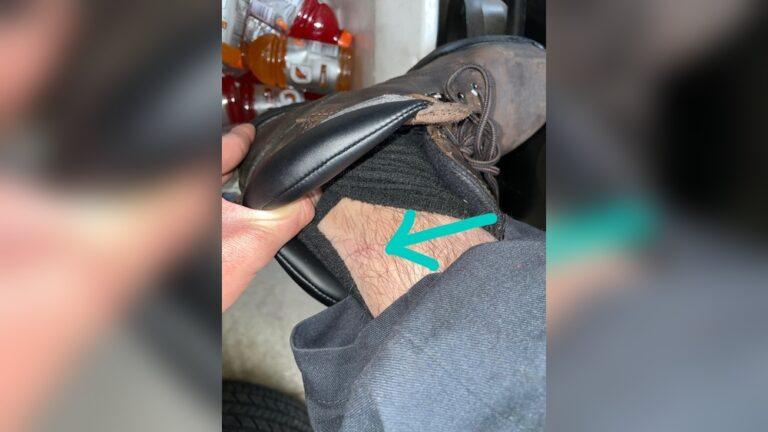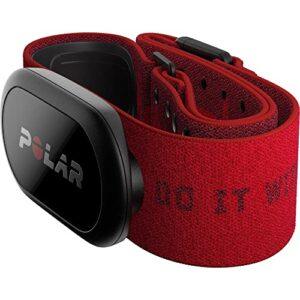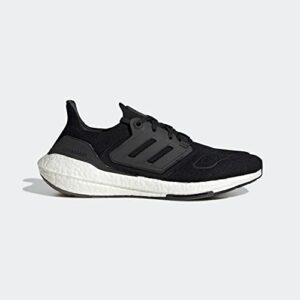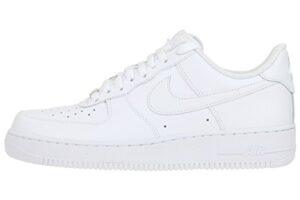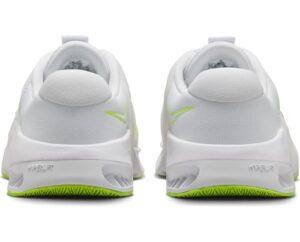Are your boots rubbing against your calves and causing uncomfortable irritation? If you’ve ever dealt with raw, sore skin after wearing boots, you know how frustrating it can be.
But don’t worry—you don’t have to suffer through the pain or give up on your favorite boots. Whether you’re wearing cowboy boots, work boots, or any other style, there are simple and effective ways to stop boots from rubbing your calves.
You’ll discover easy tips and tricks to protect your skin, stretch your boots for a better fit, and enjoy comfortable wear all day long. Keep reading to find the solutions that will make your boots feel like they were made just for you.

Credit: www.youtube.com
Causes Of Boot Rubbing
Boot rubbing on the calf causes discomfort and skin irritation. Understanding the causes helps to find the right solution. Boots rub due to pressure points and fit problems. The boot material also plays a big role in how it feels on your skin.
Common Pressure Points
Pressure points occur where the boot presses hardest against your calf. These spots often cause blisters and redness. The back of the calf and sides are usual trouble areas. Tight spots or seams can add extra friction. Standing or walking increases pressure on these points.
Material And Fit Issues
Boots made from stiff or rough materials can rub more. Leather boots may need time to soften. Synthetic materials might not bend well with your calf shape. Boots that are too tight or too loose cause rubbing. A poor fit means the boot moves too much or presses too hard.
Quick Relief Tricks
Boots rubbing your calves can cause pain and discomfort quickly. Quick relief tricks help protect your skin and ease the irritation. These simple steps reduce friction and make wearing boots more comfortable. Try these easy methods before long walks or daily use. They help prevent blisters and soreness fast.
Thick Socks For Cushioning
Wearing thick socks adds a soft layer between your skin and boots. This cushioning lowers pressure and stops rubbing. Choose socks made of wool or padded cotton for best results. Thick socks also absorb sweat, keeping your skin dry and less prone to chafing. Change socks daily to maintain freshness and comfort.
Applying Barriers To Skin
Use barriers like petroleum jelly or specialized anti-chafing balms on your calves. These products create a smooth surface that reduces friction. Another option is moleskin patches, which stick to your skin or inside the boot. Barriers protect your skin from raw spots and blisters. Reapply as needed, especially before long wear.
Indoor Wearing To Break In
Wearing boots indoors helps soften the material and shape them to your calves. Start with short periods and gradually increase the time. This process lessens stiffness and rubbing points. Use thick socks during this break-in phase for extra padding. Breaking in boots indoors prepares them for outdoor use comfortably.
Boot Stretching Techniques
Boot stretching techniques help make your boots fit more comfortably around your calves. These methods reduce tight spots that cause rubbing and pain. Stretching boots can prevent blisters and skin irritation. Below are simple, practical ways to stretch your boots safely.
Using A Boot Stretcher
A boot stretcher is a tool designed to widen tight areas. Insert the stretcher into your boot and turn the handle to expand it. Leave it in for several hours or overnight. This method gently stretches the leather without damage. It works best on leather boots that feel tight around the calf.
Heat And Wear Method
Heat softens leather, making it easier to stretch. Use a hair dryer on medium heat around the tight spots. While warm, wear thick socks and put on the boots. Walk around to help the leather mold to your calf shape. Repeat the process a few times for better results. Be careful not to overheat or burn the leather.
Manual Heel Reshaping
Sometimes the heel or back of the boot rubs the calf. Use your hands to gently press and bend the leather outward. Focus on the areas causing discomfort. Repeat this pressing daily to loosen the tight spots. This method works well for smaller adjustments and softens the boot gradually.
Additional Comfort Tips
Extra comfort can make a big difference when boots rub your calves. Simple tools and tricks help reduce pain and prevent blisters. These tips work well alongside proper boot fitting and socks. Try these easy methods to ease rubbing and enjoy your boots longer.
Talcum Powder To Reduce Friction
Talcum powder helps keep skin dry and smooth. It reduces friction between your skin and the boot. Apply a small amount on your calves before putting on boots. This stops sweat from causing slippery rubbing and irritation. Use it regularly for best results.
Heel Lifts For Pressure Shift
Heel lifts change how your foot sits inside the boot. They move pressure away from sore spots on your calf. Insert a soft heel lift inside your boot to lift your foot slightly. This eases tight spots and prevents constant rubbing. Heel lifts are easy to use and adjust.
Moleskin And Blister Pads
Moleskin is a soft fabric that protects your skin from rubbing. Cut a small piece and stick it on the boot area that rubs your calf. Blister pads work the same way and cushion sensitive spots. They create a barrier to stop blisters and pain. Carry some with you for quick relief.
Maintaining Boot Comfort
Maintaining boot comfort is essential to prevent rubbing on your calves. Proper care keeps boots soft and flexible. This reduces pressure points and avoids blisters.
Simple habits can extend the life of your boots. They help boots fit better and feel more comfortable every day.
Regular Cleaning And Conditioning
Clean your boots often to remove dirt and sweat. Use a soft brush or cloth for cleaning. Avoid harsh chemicals that damage the material.
Condition leather boots regularly. This keeps the leather soft and prevents cracks. Soft leather bends easily, reducing rubbing on calves.
For suede boots, use a special suede brush. This restores the texture and removes grime. Conditioners made for suede keep the material supple.
Avoiding Overstretching Damage
Do not overstretch your boots. Excessive stretching weakens the material and changes the shape. This can cause new rubbing spots.
Use a boot stretcher carefully. Stretch only the tight areas. Stretch in small steps to avoid damage.
Heat can help soften boots for stretching. Use a hairdryer on low heat. Warm boots stretch more easily without harm.

Credit: www.reddit.com
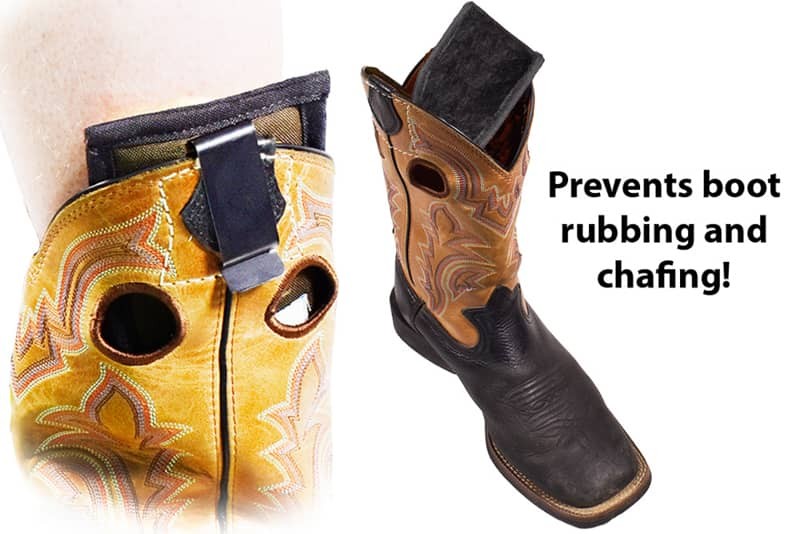
Credit: bluestonesafety.com
Frequently Asked Questions
How To Make Boots Less Tight On Calves?
Wear thick socks to add padding and gently stretch boots. Use a boot stretcher overnight for tight calves. Apply Vaseline or moleskin to prevent rubbing. Wear boots indoors briefly to mold them. Avoid overheating leather; condition after stretching to keep material soft and flexible.
How To Stop Chafing Boots?
Wear thick socks for cushioning and stretch. Apply Vaseline or moleskin on rubbing areas. Use a boot stretcher or gently heat and shape boots. Break boots in gradually by wearing them indoors to prevent chafing.
What Does Spraying Wd-40 On Boots Do?
Spraying WD-40 on boots helps repel water and prevent rust on metal parts. It also softens leather temporarily but may damage it if overused. Use sparingly and avoid direct application on leather to maintain boot quality.
How Cowboy Boot Comfort System Prevents Boot Rubbing And Chafing?
The Cowboy Boot Comfort System uses cushioned linings and flexible materials to reduce friction. It evenly distributes pressure, preventing rubbing and chafing for all-day comfort.
Conclusion
Stopping boots from rubbing your calf takes simple steps. Wear thick, cushioned socks to add protection. Use moleskin or Vaseline to reduce friction on skin. Try stretching boots gently with a boot stretcher or warm air. Pressing problem spots by hand can also help shape the boot.
These easy fixes improve comfort and prevent pain. Keep trying different methods until boots fit well. Enjoy walking without soreness or blisters. Your calves will thank you for the care.

Madison Clark is a footwear expert and the voice behind MyStyleGrid.com. She specializes in honest shoe reviews, style tips, and practical guides to help readers find the perfect pair for any occasion. With years of experience in blogging and content creation, Madison makes footwear knowledge simple, stylish, and easy to follow.

